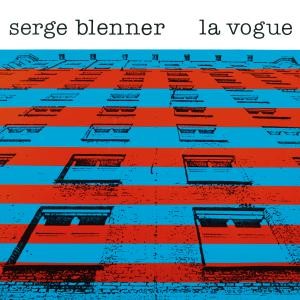Serge Blenner
La Vogue

- Record Label
- Bureau B
About this item
Originally released 1980 on Sky records, this is music for the apocalyptic eighties inna Deutschland state of mind. When Serge Blenner left his native France for Hamburg, West Germany, neither he nor anyone else could have guessed that he would inadvertently compose a soundtrack for the Cold War. But his dark, monotone synthesizer album "La Vogue" (1980) turned out to be just that.
You don't get to make 17 albums and stay out of the public eye unless you live and breathe music. Focus on nothing else. Commercial success may come your way, but will always be subordinated to the goal of making music on your own terms rather than music designed to sell. Listener, meet Serge Blenner.
Blenner was born in 1955 in Alsace, the easternmost region of France. He studied composition and harmony at the Conservatoire de Mulhouse. He loved listening to electronic music from the Berlin School: Klaus Schulze, Tangerine Dream, Ash Ra Tempel/Manuel Göttsching, whom he got to know when they played in Alsatian churches and chapels. Such locations added a magical dimension to what was already extraordinary music. Blenner the proselyte had seen enough to realise: it was time to move to Germany, whence this music came.
The year was 1975. He soon began experimenting with electronic music himself and graduated to live performances by 1978 and finally settled in Hamburg in 1979. One of the most important electronic music labels of the period, Sky Records, was based here, releasing music by such illustrious artists as Cluster, Michael Rother, Brian Eno and Conny Plank. Within the space of six months Blenner had recorded the tracks which would become La Vogue and sent them to Sky Records. A deal was done and La Vogue was officially released before the year ended.
The record was a resounding success, some tracks even made it onto the radio - crucially, aired at hours of the day when significant numbers of listeners were tuning in, instead of being confined to the niche programmes or graveyard shifts more commonly associated with the genre. The longest track on La Vogue by far clocks up 8 minutes, 49 seconds, a rarity in Blenner's oeuvre, well outside his usual range of three to five minutes.
La Vogue is an album of two halves. Through the first four tracks, Blenner still seems to be searching for his own style, beginning with the minimalistic, rather sombre fanfare of Phrase I built around a single melodic pattern. Next up is the almost poppy, harmonically rich Phrase II, followed by the spherical Phrase III and the crystalline, chiming Phrase IV. If the first four cuts are linked only by heterogeneity, tracks five to eight are very much of a piece. Together they represent a frosty, menacing soundtrack worthy of the apocalyptic mood which hung over the early 1980s, particularly in West Germany. With Cold War angst at its peak, many people feared a Soviet nuclear attack was imminent.
Blenner doesn't really see the connection, "I wasn't thinking along those lines at all, I wouldn't say I have a depressive streak. Although one filmmaker did ask if he could use Phrase V on a soundtrack for a horror film. And someone has added Phrase V to a YouTube video of underground trains passing through East Berlin ghost stations in the early 1980s. I didn't consciously set out to evoke such a dark mood, but if that's what others hear - then who am I to argue?"
TRACK LISTING
1. Phrase I (6:43)
2. Phrase II (4:34)
3. Phrase III (6:05)
4. Phrase IV (4:00)
5. Phrase V (3:07)
6. Phrase VI (3:53)
7. Phrase VII (8:48)
8. Phrase VIII (3:53)